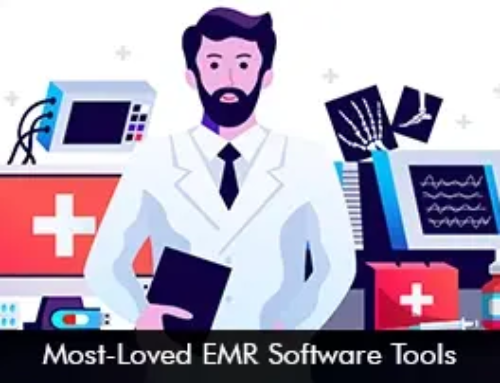In today’s digital landscape with more hospitals using EMR Software, maintaining patient information privacy is more crucial than ever. With Electronic Medical Records (EMR) Software becoming the norm it has become to follow robust privacy protocols to ensure data encryption.
In 2025 and the year ahead, healthcare providers won’t only need to maintain the security of their systems but also keep pace with evolving privacy threats, cybersecurity issues, and new regulations. Both EMR Software vendors and the people who use it need to stay one step ahead to protect patient data and ensure everyone’s trust.
How can EMR Software Protect Patient Data and Ensure HIPAA Compliance?
Modern EHR Software, such as Tebra EMR Software and AdvancedMD EMR Software, now comes equipped to handle HIPAA rules, featuring built-in tools specifically designed to protect sensitive electronic health information. These updated Key security features include:
- Audit trails that log whenever someone views records, including who looked at them, when, and the reason.
- Automatic time-outs and session locks to prevent unauthorized access if a user steps away.
- End-to-end encryption to keep data safe both when it’s stored and while it’s being sent.
- User permissions and access controls that limit who can see what, reducing unnecessary exposure of patient details.
Beyond these core features, many Electronic Medical Records (EMR) Systems like NextGen EHR Software also provide Business Associate Agreements (BAAs). These agreements lawfully bind the software vendor to protect patient data.
Looking ahead to 2026, many responsible vendors are increasingly incorporating AI-powered threat detection. This technology helps spot unusual login attempts or suspicious data access in real-time. This adds an extra layer of security and flagging any dangerous and suspicious logging behavior.
Better EMR Software Security in 2025 and 2026
With phishing and ransomware threats on the rise with the use of digital data. Patient privacy and protection becomes even more crucial in the years to come. Healthcare organizations cannot afford to have a laid-back attitude as these threats come with hefty disadvantages of data breaches, financial loss, and operational issues.
To avoid putting ones organization and patient conviction on stake, it has become necessary for hospitals in the USA to ensure better security with EMR Software Tools. A new tool has been designed to monitor EHR System activity and behavior for any unusual activity. This application leverages the power of Machine Learning to flag out VIP snooping and any such out of the box attempts that can harm patient data security.
Furthermore, it makes sense to conduct a security audit of the existing EMR Software to recognize any weak security points, so these can be quickly addressed for maximum security.
Emerging Security Trend in EMR Software – The Federal Cybersecurity Regime for Health Data
The US Government is taking steps to ensure robust security of patient data. The Office for Civil Rights, a part of HHS is rolling out updated rules. These new rules will ensure stricter protocols in clinics, hospitals using Electronic Medical Records (EMR) Software. According to this new rule EMR Software vendors will have to use MFA, indulge in network segmentation, and encrypt patient data. If you are using an EMR System it is important to ensure that the vendor is taking a proactive approach to use these strong security tools, to avoid any problems later.








